- Home
- Mack Maloney
Strike Force Bravo s-2
Strike Force Bravo s-2 Read online
Strike Force Bravo
( Superhawks - 2 )
Mack Maloney
A suicidal terrorist cell threatens to detonate explosives in a Singapore skyscraper taking thousands of innocent American lives. No demands. Just sheer massive destruction-televised as it happens across the globe. As quickly as the terror unfolds, it's stopped dead-by the Superhawks, a crack team of patriotic warriors who live and breathe American vengeance. Their next step is getting the man behind the aborted attack-one of the most elusive terrorists in the world.
Abdul Kazeel, supermook to Al Qaeda, has escaped their wrath before. Sequestered in a Filipino compound his new mission is to create a fanatical terrorist army. His planned attack on American soil is unthinkable, hyper-violent, and underway: blowing up more than a dozen airliners with stolen missile launchers. As the potential for disaster grows stronger by the second, the Superhawks are moving in to bring their own brand of chaos to the monster who invented the word.
Mack Maloney
Strike Force Bravo
In memory of those U.S. soldiers lost in the
War Against Terrorism
Part One One
Crazy Night
Chapter 1
Singapore
The terrorists came dressed as waiters.
They arrived at the rear service entrance to the Tonka Tower Hotel at precisely 10:00 A.M. There were eight of them. They unloaded six food carts from their two vehicles. There was no security in this part of the building and the rear door had been left open for them. They rolled the carts up onto the kitchen’s loading platform and simply walked inside.
It was checkout time and the lobby of the enormous hotel was packed. Hundreds were waiting in line; hundreds more were picking up luggage or trying to find cabs. The routine chaos gave the eight terrorists all the cover they would need. They walked right through the lobby, heads down, pushing their carts, and made for the service elevators. Once there, they pushed the button to call the largest of the hotel’s 16 service lifts. It arrived a few seconds later. Loading the carts and themselves aboard, they quickly closed the doors and hit the button to go up.
The Tonka hotel was one of the tallest structures in the world. It was shaped like a futuristic pagoda, with a tower that soared 1,200 feet in the air. There were more than 3,000 rooms here, most of them expensive suites, plus many function areas, shops, and trendy restaurants. The hotel’s grand style and downtown location made it a popular place for foreign businesses, especially American companies, to hold meetings and corporate events. The Singapore government encouraged such things and frequently picked up the tab.
The hotel was especially crowded with American citizens today, as it had been declared America Day by the city government, a fete for the families of U.S. business and foreign service people living in Singapore. Several gala events were being held at the Tonka. A huge breakfast for the American consulate was in progress on the sixteenth floor. A reception for U.S. Embassy employees was about to begin on the forty-fourth. Another for the Ford Motor Company was scheduled for 10:30 on the ninety-sixth.
But the disguised terrorists in the elevator passed all these floors. They were heading directly for the top.
* * *
They were members of Qeza al-Habu, a terrorist cell linked directly to Al Qaeda. Their destination was the building’s penthouse, up on the one hundred and fortieth floor. There was an expansive banquet hall here known, simply enough, as the Top Room. A party for children of U.S. diplomats serving in Singapore had started in the hall around nine. There were 300 kids on hand, most under the age of 12, some as young as just a few months old. There were 22 adults watching over them.
The eight terrorists arrived on the top floor and unloaded their carts. Two stayed in the hallway and, using tools hidden in a steaming dish, disabled the hotel’s elevator system by short-circuiting its main and auxiliary power panels, all of which were located here at the building’s peak. This jammed more than 50 passenger lifts in place, trapping hundreds and making access to the top floor nearly impossible. It also knocked out every light in the hotel from the ninety-ninth floor down.
The six remaining terrorists proceeded to the Top Room function hall. They reached its one and only door and wheeled the food carts in. The large triangular room had a long dining table set up in the center. On it sat four gigantic chocolate cakes. Huge lime-tinted windows made up the three walls of the room; balconies went all around the outside. The Top Room was so high, wisps of clouds could be seen passing the windows.
The terrorists were met by several adults who greeted them quizzically. The children’s party had already received their cake order from the kitchens downstairs. Why were these men here?
The terrorists didn’t reply. They simply locked the door behind them, then uncovered their food carts. There were eight AK-47 assault rifles hidden inside. The terrorists pushed seven of the adults against the nearest wall and calmly shot each one in the head. Panic erupted. Children began screaming; some of the other adults tried to hide. The terrorists fanned out around the room, hunting down five more adults and killing them, including two shot at point-blank range found cowering under the banquet table. This thoroughly terrorized everyone in the room. The remaining adults froze in place. Many of the children went numb with fear. A few, however, did not. Some began crying. The terrorists walked around the room and shot each one. Soon enough, the room was deathly quiet.
The terrorists made their captives lie facedown on the floor. Some muffled cries could still be heard as the young hostages and the adults complied. Those terrorists charged with disabling the elevators joined their colleagues in the function room. Besides their tools and more weapons, their food carts were full of plastique, the highly volatile plastic explosive, nearly 60 pounds of it in all.
The leader of the terrorist group was a man known only as Moka. He was a tall, skinny Syrian Arab. He began shouting orders. While four terrorists watched over the hostages, three others began setting up the explosives. The Top Room had three immense pillars, one in each corner of the triangular hall. They were painted pearl white, with gold leafing. Exotic vines and flowers grew up their sides, and at night, under low light, these flowers became translucent. But the three pillars served a purpose beyond ornamental. Soaring right through the glass ceiling 35 feet above, they held the roof of the immense tower in place. The terrorists knew this because they had taken a complete set of building plans for the Tonka off the Internet. They also knew if the pillars were severed with enough force, the concussion of the blast and the weight of the debris would send the entire tower crashing to the ground.
The terrorists attached explosive charges to the three pillars 20 pounds each. Plastique was very pliable and the individual 2-pound packets stuck to the pillars like glue. Plastique was also easy to detonate. Two wires from a 20-volt motorbike battery would provide the spark for each pillar; a simple kitchen timer would throw the switch. The terrorists worked quickly, as they had been trained to do. This operation had been planned for six months. The participants had practiced for it every day for the past eight weeks.
Once the explosives were in place, the terrorists took out their third arsenal of weapons: cell phones. Each man had three, except the leader, Moka, who had five. Each cell had a set of phone numbers preprogrammed inside it, each number connected to a large news organization somewhere around the world. The terrorists began activating these numbers. In seconds, phones were ringing at the news desks of CNN, Fox, the U.S. broadcast TV networks, the BBC, the Associated Press, Reuters, and more. The message transmitted by the terrorists was short and grim: they had taken over the world-famous Tonka Tower and were planning to destroy it, with thousands trapped inside, in 15 minutes.
/>
Moka’s last call was to a local Singapore TV news station, Sing-One TV. It was the largest of the four news stations in the city. Moka was soon talking to an individual identified as Sing-One’s executive manager. The man believed Moka right away, as reports that something was wrong at the Tonka Tower had already reached the TV station.
Moka made himself very clear to the TV executive. This was not a situation for negotiations or ransoms or diplomacy. This was an unfolding act of war. He and his men were dedicated to publicizing the plight of Muslim peoples everywhere. To this end, they were going to blow up the Tonka and kill everyone in it. Why was Moka personally calling Sing-One TV? Because he wanted the entire incident broadcast live around the world.
Sing-One’s manager called Moka a bastard and a religious devil but then quickly complied with his wishes. Moka would allow only one news chopper to come close to the building. A camera onboard would be able to record everything happening inside the function hall. When the station manager pointed out there were other TV copters in the city and that a number of police and military helicopters would soon be heading for the tower as well, Moka assured him that only the Sing-One chopper would be allowed to approach.
The rest would have to stay at least 1,000 feet away, or Moka’s men would start killing hostages.
* * *
In the next 10 minutes, the situation around the tower changed dramatically.
The city police cordoned off the entire downtown area, 20 blocks in every direction. Military police were flooding onto the scene. The government’s Rapid Response Team arrived in six armed helicopters, landing just three blocks from the besieged tower. These special operations soldiers dispersed to buildings closest to the hotel, setting up weapons’ positions and listening posts. The U.S. Embassy had also been alerted. Despite Moka’s warning, an emergency diplomatic team was on its way.
Meanwhile thousands of citizens were streaming out of the area. They included the hundred or so guests who’d managed to get out of the tower simply by not being on an elevator when the terrorists first struck. Many more frightened guests were flowing down the stairwells of the hotel; most had a long, slow trip ahead of them, especially in the darkened stairwells. And hundreds were still trapped inside the building’s fifty stalled elevators.
The sky above downtown Singapore had changed, too. As predicted, a small fleet of military aircraft, police copters, and TV news choppers had arrived. Thirteen in total, they were all orbiting the tower, except one: the bright yellow Bell Textron belonging to Sing-One TV.
So far the other helicopters had grudgingly obeyed Moka’s orders, staying out at least 1,000 feet. The yellow Sing-One copter, however, was allowed to hover just 15 feet away from the Top Room’s grand balcony, located on the east side of the building. This was a huge parapet, enclosed in glass except for a plant-filled open-air terrace. By floating just off its railing, the people inside the Sing-One chopper were indeed able to capture just about everything going on inside the function room, thanks to their computer-stabilized Steadicam. Inside two minutes of the copter’s arrival, the horrifying images at the Tonka Tower were being broadcast around the world.
And it was all very clear for billions around the world to see: the hostages, the explosives, the terrorists, and the dead. It was early evening in the United States; the attack had been planned precisely for this hour so that it would be watched by a prime-time audience back in the states. A few minutes into the drama, Moka and three terrorists came out onto the terrace. Normally this would have been a very windy place, but glass valances installed around the balcony blocked most of the wind. Moka’s men held up a banner. Scrawled in both Arabic and crude English letters, it declared the cell’s intentions for all the world to see. At the same time, a phone connection was made between the Sing-One news copter and Moka. The conversation was conducted in Arabic, a common language between the head terrorist and at least one person inside the copter.
Moka reiterated his group’s plans, and to prove his point, he signaled that four bodies be brought out to the terrace. Two children and two adults. They were unceremoniously thrown over the side of the balcony, twisting, turning, the smallest caught by the wind, all to plunge nearly a quarter of a mile to the ground below. It was a horrifying sight to see on camera and in person.
Then Moka read a statement, saying again that he had no demands, that he intended to destroy the tower at exactly 10:30 A.M. and that the timers to do this had already been set. This was going to happen, he said, and the world could only sit and watch. If anyone tried to interfere, Moka’s men would start shooting hostages, children first.
A tiny clock popped up in the lower right-hand corner of Sing-One’s broadcast screen.
Catastrophe was five minutes away.
* * *
More than two thousand people were still trapped inside the tower. To make matters worse, all of the lights had gone out in the building by this time, even inside the Top Room. Somehow a small fire had started on the thirty-first floor, filling the stairwells with acrid smoke. As the power continued to fail, many of the sinks and toilets began to overflow, too.
The people in the Sing-One news chopper asked Moka if he had any last statement to make. Moka responded that he’d already spoken his last word, as had his men. The people in the copter asked Moka if he wanted them to get final shots of the faces of his martyrs on TV, before the blast went off. To this Moka agreed.
He called all but three of his men to the balcony. Each man took out photos of loved ones he’d carried with him on the mission; they held the photos up to the copter’s Steadicam. By the time the four terrorists got into camera position, the deadline for the explosives to go off was just 60 seconds away. Each man shouted a short prayer, then raised his right arm above his head, with two fingers extended. Oddly, a peace sign.
Moka then signaled the copter that the explosives were about to go off. Sing-One TV had to back away. But the copter remained where it was, just 15 feet off the balcony. Moka signaled again. But the copter came in even closer. Moka became furious. He began shouting into the phone that the aircraft had to get away; it was important to him that the copter crew live to tell their tale. But with the explosives just seconds from going off, the helo kept coming in.
Now Moka was confused. He squinted his eyes, trying to see into the copter’s open bay. What was this? The man who had been holding the Steadicam just moments ago was now holding a rather large gun. Men on either side of him were holding guns, too. Moka saw the muzzle flashes but never heard the shots that killed him. Six rounds, in rapid succession, went right through his head.
The same barrage killed the other four terrorists on the balcony, this while the copter’s TV camera, now relocated to its cockpit, kept rolling for all the world to see. Then incredibly, and still on live TV, the helicopter touched down on the balcony’s railing, an amazing feat of piloting. Six men burst from the copter’s open bay. They were not TV reporters or cameramen. They were wearing combat suits—American combat suits. All black with armor plating, ammo belts, side arms, and helmets that looked like props from a fifties sci-fi movie. All with stars-and-stripes patches on their shoulders.
At the same moment, two of the Top Room’s great plate glass windows came crashing in. Men swinging on ropes flew through the openings. The sudden change in air pressure created a minitornado inside the room. Some of the adult hostages screamed, kids began crying, but it was the remaining terrorists who panicked. They were stationed next to the explosive-packed pillars, but now the noise was tremendous, the wind like the devil. And suddenly a small army of armed men was coming at them.
Each terrorist backed up to guard his assigned pillar, but for what? The explosives were set to go off in 30 seconds. One terrorist boldly stood in front of his plastique charges, intent on protecting them with his body. He was shot five times in the head and there is where he died. His killers vaulted over the hostages and disconnected the explosive packs on the first pillar. But two remained, an
d only 20 seconds were left.
The terrorist in the northeast corner took cover behind his pillar and started firing at the soldiers in black. Everyone, hostages and soldiers alike, hit the floor. The men who had crashed through the window returned fire; a vicious gunfight erupted. The terrorist returned fire in three short bursts but turned too late to see the six men who’d just landed on the balcony. He was caught in their combined fusillade, taking more than 40 rounds to the stomach alone. He fell over in slow motion, his insides hitting the floor before the rest of him. His charges were quickly disconnected.
Now just one terrorist remained, with one pack of explosives — and 10 seconds before detonation.
Suddenly alone, this terrorist grabbed two small children and pulled them back against the pillar with him. The kids began screaming. Shrieks of horror went through the hall. “Don’t shoot!” some of the adults started screaming.
Nine seconds.
The terrorist fired in the direction of his attackers. He was sure the soldiers would not shoot him, not as long as he was holding the two terrified children.
Eight seconds.
The soldiers kept advancing, moving quickly, but in a crouch. Their weapons were raised, but they were not firing.
Seven seconds.
The terrorist fired again, hitting the soldier closest to him, but still about twenty-five feet away. He watched in astonishment as his bullets staggered the man but then bounced off his armor plating.
“You cannot all be supermen!” the terrorist cried out.
Six seconds.
Most of the adult hostages were crying now; they knew the explosives were about to go off. One pack, 20 pounds, was more than enough to kill everyone in the room.
Five seconds.
The soldiers continued advancing toward the last terrorist. But would they sacrifice two children in order to save many?

 Strike Force Bravo s-2
Strike Force Bravo s-2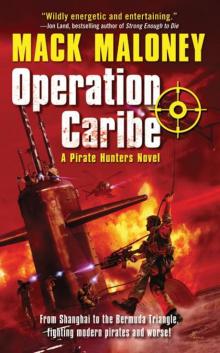 Operation Caribe ph-2
Operation Caribe ph-2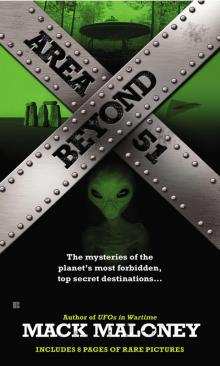 Beyond Area 51
Beyond Area 51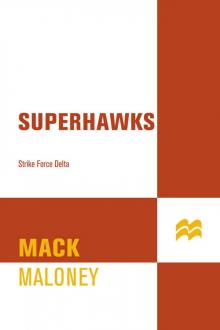 Strike Force Delta
Strike Force Delta B00447820A EBOK
B00447820A EBOK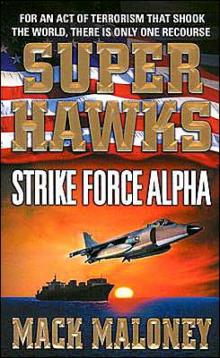 Strike Force Alpha
Strike Force Alpha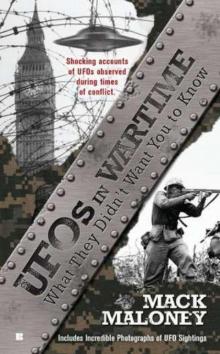 UFOs in Wartime: What They Didn't Want You To Know
UFOs in Wartime: What They Didn't Want You To Know Planet America s-2
Planet America s-2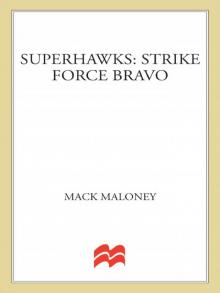 Strike Force Bravo
Strike Force Bravo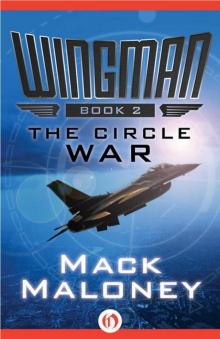 The Circle War w-2
The Circle War w-2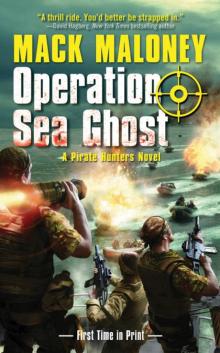 Operation Sea Ghost ph-3
Operation Sea Ghost ph-3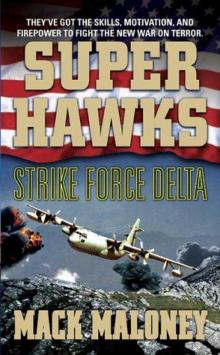 Strike Force Delta s-4
Strike Force Delta s-4 The Wingman Adventures Volume One
The Wingman Adventures Volume One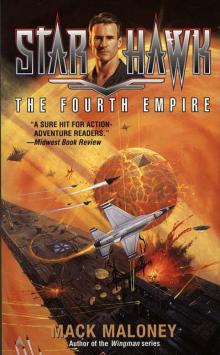 The Fourth Empire s-3
The Fourth Empire s-3 Battle at Zero Point s-4
Battle at Zero Point s-4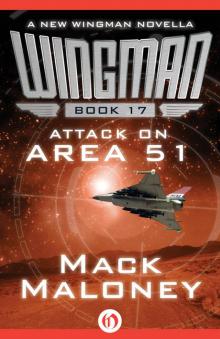 Attack on Area 51
Attack on Area 51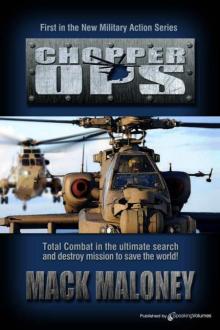 Chopper Ops
Chopper Ops B003IKHEWG EBOK
B003IKHEWG EBOK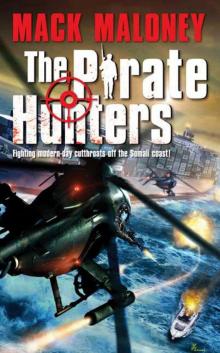 The Pirate Hunters ph-1
The Pirate Hunters ph-1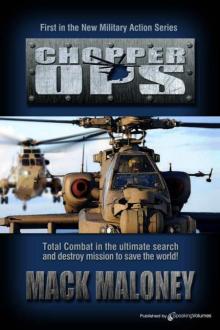 Chopper Ops co-1
Chopper Ops co-1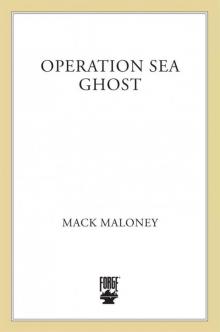 B005J4EW5G EBOK
B005J4EW5G EBOK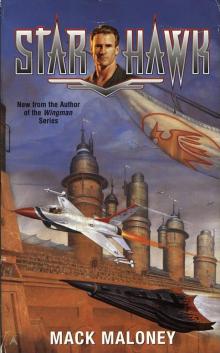 Starhawk s-1
Starhawk s-1 Storm Over Saturn s-5
Storm Over Saturn s-5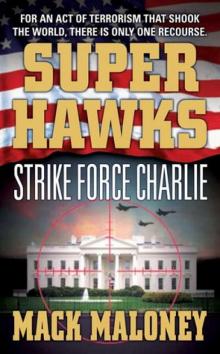 Strike Force Charlie s-3
Strike Force Charlie s-3